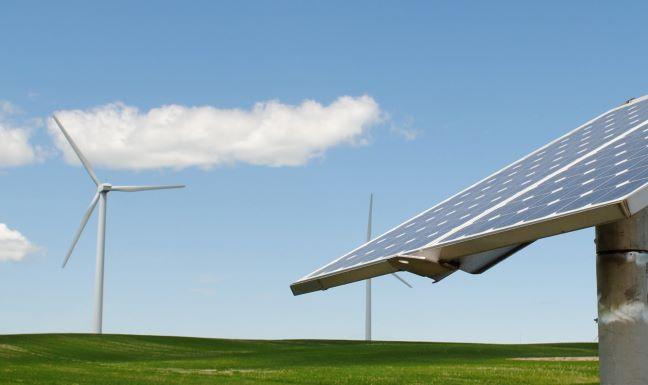The Math on Renewable Energy

By Carson Fong, Senior Analyst, BRC-Canada
(March 24, 2023)
You may have noticed an exciting new number in a fact sheet we published on our website in February 2023. We showed that the annual energy needs of more than a million Alberta homes can be supplied by the 2.7 gigawatts (GW) of corporate renewable energy projects announced to-date in the province. With only 1.6 million dwellings of all types in the province1, this represents a significant proportion.
But how did we arrive at that lofty figure of more than a million?
Well, as it turns out, it’s not a simple calculation.
The math involves a variable called capacity factor. This is the metric used to measure how much energy a power plant actually produces, as a percentage of its installed capacity. The theoretical maximum production for solar, for example, assumes constantly clear skies and 24/7 daylight. Similarly, a coal or gas plant’s theoretical maximum production assumes there are no shutdowns or reduction in the power they produce at any time.
Clearly, these are all purely theoretical conditions and all forms of power operate under 100 per cent. Capacity factor helps us understand how much a project can generate in the real world. It is calculated by taking the energy produced by the plant within a certain time frame and dividing it by the maximum it could have produced in that time frame, assuming perfectly ideal conditions.
But enough theory, we still need to show how we got to one million homes!
The energy generated by any power plant is estimated with this formula:
When you multiply the megawatts of installed capacity by 8,760 hours per year (24 hours x 365 days) and then by the capacity factor, you get energy supplied in megawatt hours (MWh) per year. You then divide that by 7.2 MWh per year, which is what a typical household in Alberta uses.
The calculation of capacity factor is not uniform across all the installed megawatts (or GW) and varies based on the type of generation or energy source. For each type of renewable energy, much also depends on the wind and solar resources in an area and the amount of wind or solar available on any given day or hour. Alberta is blessed with abundant wind and solar resources allowing developers to build renewable energy projects based on certain projections of how much energy they will produce over their economic life.
In Alberta, the average capacity factor is around 45 per cent for recent wind projects2 and 20 per cent for solar ones.3 Of the 2.7 GW of project capacity announced under these renewable energy deals, 1.3 GW is wind and 1.4 GW is solar.
When we hit 2.7 GW of renewable energy project capacity at the end of 2022, we could supply the energy needed by 1,080,000 homes in Alberta! That represents roughly two-thirds of all homes in Alberta – an achievement worth celebrating.
You may think that it should be an enormous proportion of our electrical needs. But Alberta is an industrial powerhouse. Only 20 per cent of our power use is for residential needs4, while 48 per cent is consumed by industry, 28 per cent is commercial and the remaining four per cent is for farms.
This only serves to underscore the importance of our work at the Business Renewables Centre-Canada (BRC-Canada). There is a huge opportunity to meet these needs with a diverse generation mix that is dominated by renewables. Every business community participant that joins BRC-Canada and every power purchase agreement struck moves us closer to fulfilling our energy needs with clean, renewable energy.
Check back next month for our newest blog post as we explore the ins and outs of renewable energy.
